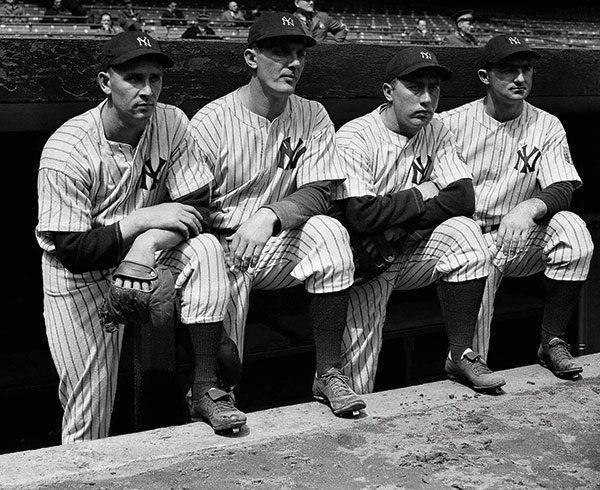
For decades, baseball’s spring training has been synonymous with Florida and, more recently, Arizona. But from 1943 to 1945, the Jersey Shore was the place to be for this annual ritual.
It took World War II to bring spring training to New Jersey. For the 1943 season, baseball commissioner Kenesaw Mountain Landis ordered teams to train north of the Potomac River and no further west than the Mississippi River to cut travel costs. The 16 major league clubs scrambled to find new sites; three teams chose New Jersey.
The New York Giants trained in Lakewood from 1943 to 1945. The New York Yankees chose Asbury Park in 1943 and moved to Atlantic City for 1944 and 1945. The Boston Red Sox trained in Pleasantville in 1945.
Sam Christopher, then a 16-year-old Lakewood High School student, recalled the Giants’ memorable arrival in 1943.
“The team came in on a train. There were about 1,000 people waiting,” says Christopher, now 83 and still living in Lakewood. After arriving, the Giants, led by player/manager Mel Ott, traveled to their hotel by horse and carriage to save fuel. Ott cautioned his players to be grateful. “Don’t squawk over inconveniences. Don’t forget this is not Miami and there’s a war on,” he said in a newspaper interview.
The Giants trained at Ocean County Park, playing ball on land John D. Rockefeller once owned. In 1945, the team roomed in Rockefeller’s mansion, with its more than 45 guest rooms and 17 baths. The Sporting News facetiously noted the Giants “are faced with an imposing scarcity of butlers and a beastly shortage of caviar.”
In Atlantic City, the Yankees trained and played exhibition games at Bader Field, an airport better known for flying airplanes than flyballs.
“I was amazed at how far they could hit the ball,” says Pinky Kravitz, an 83-year-old Atlantic City resident who attended some workouts as a teen.
With stars like Joe DiMaggio and Phil Rizzuto serving in the armed forces, the Yankees relied on a wartime lineup featuring Nick Etten and Snuffy Stirnweiss. The Bombers got the chance to display their batting prowess inside Convention Hall, where they tried to hit the 137-foot high roof with a batted ball as part of a promotion.
Both the Yankees and Giants tried to boost the morale of the local military. The Yankees visited wounded servicemen at England General Hospital in Atlantic City and offered tickets to the military for games. In 1944, the Giants traveled to Lakeland Naval Air Station for a game. The Navy dropped baseballs from a blimp 400 feet in the air in a special promotion. Outfielder Danny Gardella and first baseman Phil Weintraub made impressive catches.
By 1945, New Jersey had three teams with the addition of the Red Sox, who trained at Ansley Field in Pleasantville. The Yankees and the Sox got a jump on their rivalry with a nine-game exhibition series, won by the Yankees, 5-4.
When the 1945 season began, military victory was near. The Germans surrendered on May 7; Japan followed in August, ending the war. In 1946 spring training returned south, ending a unique chapter in New Jersey sports history.
Tom Wilk is a frequent contributor.
